
Forget the stigma and shame. Financial expert Bruce Sellery helps you understand bankruptcy and how to decide whether it's the right decision for your family...
- Subject:
- Business
- Financial Literacy
- Material Type:
- Activity/Lab
- Date Added:
- 02/26/2024

Forget the stigma and shame. Financial expert Bruce Sellery helps you understand bankruptcy and how to decide whether it's the right decision for your family...

The material in this lesson will help students become aware of the warning signs of financial difficulties. When difficulties arise, students should first contact their creditors. Next, efforts should be made to revise spending patterns. In addition, assistance from a Credit Counseling service agencies might be considered. What if these actions do not help?

This collection features resources to support teaching Module 26B: Handling Debt Problems B from the Saskatchewan Financial Literacy curriculum. This activity suggests articles, websites, assignments, and discussion topics to help develop some problem-solving skills in relation to managing debt problems.

This resource provides a listening guide, presentation and student assignment on the topic of "Buy Now, Pay Later", which has become a very popular way to finance everyday purchases. Students are challenged to identify the rise of BNPL programs and how they can "hurt" your credit score and lead to irresponsible borrowing in the future.

Buy Now, Pay Later (BNPL) services have rapidly transformed the way many consumers approach online shopping, offering an alternative to traditional credit cards by allowing immediate purchases with deferred payments. These services have gained popularity for their ease of use and the perception of increased affordability, especially among younger consumers. However, it's crucial to understand the financial implications of BNPL, including the risks of overspending, debt accumulation, and potential impacts on credit health, to make informed and responsible financial decisions.
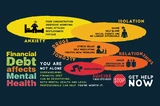
There are several interesting articles written by Anne Gaviola on Vice focused on Canadian finances, debt, and correlations between money and a person’s well-being. Keeping your debt a secret can mess with your mind and body. The culture of secrecy around debt causes young people to suffer in silence, making it even harder to manage debt. Use this content for case-based learning opportunities.
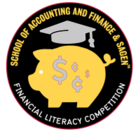
This is an online lesson with built in quizzes, videos and explanations. Students can use this to supplement the learnng happening in the classroom on the credit card unit. Topics covered include: How do credit cards work?When should you use a credit card?Credit Card TerminologyWhat are some factors to consider when choosing a credit card?What are the costs of using a credit card?What are credit scores and how can you build your credit score?There is also a mini case activity included at the end with questions and feedback for the student.

Coffee roaster and entrepreneur Paul Foster shares his earliest childhood memories about money and an early job at the bank seeing how customers manage their debt. These experiences shaped his financial future. Students will review three different video segments on being an entrepreneur, advice on debt and long term impact of loans, especially when you are self-employed. The activities include multiple choice, vocabulary, short answer and open ended questions giving the students an opportunity to review advice on being an entrepreneur, managing your debt and how this will benefit your future.Chapter 1 Childhood memories about money and being an entrepreneur video: https://www.youtube.com/watch?v=trBgl4tH6vU Chapter 2 Dealing with debt video: https://www.youtube.com/watch?v=b22pGQFMQpM Chapter 3 Paying off student loans video: https://www.youtube.com/watch?v=syoXqBo9IFA

In this Case Study, students will take on the role of a credit counselor to assist a borrower who finds himself in serious financial distress. Several options will be presented, and students will identify pros and cons of each approach and choose a path forward.

Managing debt loads can be very difficult and overwhelming at times. Hiding from debt and avoiding the problem, will only make the situation worse. This activity includes mini case studies on how to handle various debt problems so that the students can take control of their debt and move forward to a better financial future.

Financial Literacy in the Classroom Lessons and Resources: Home Ownership: This is an online lesson with built in quizzes, videos and explanations. There is also a mini case at the end of the lesson. Students can use this to supplement the learnng happening in the classroom on the credit card unit. Questions to considerWhat factors should you consider when house shopping? Location, condition of home What can you afford and down payment requirements (GDS, TDS), credit scoreWhat are some key terms related to mortgages? How are mortgage payments calculated? What are closing costs?
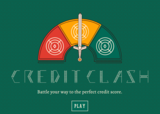
In the game Credit Clash, the player/student decides how many credit prodcuts they will take out (credit cards, student loans, auto loans, mortgages), when they were "ready" for the loan and if they were able to pay the loans. The debt may even go to "collections" during the game if the player isn't careful and responsible with their payment and borrowing.
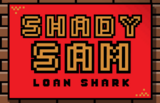
In Shady Sam, the player/student plays the role of the lender, and the objective is to make as much money from unsuspecting customers as possible (hence the name.) It is a great review of all the loan terms and how they impact the total amount paid by the borrower/earned by the lender (loan sharks). Play here: https://shadysam.com/

Money StoriesGrounding Indigenous Youth in the Lessons of their EldersWhat is it?Money Stories is a customized money management training program for Indigenous youth. The program combines Indigenous Elders speaking about their experiences with money, with facilitator-led activities about money that are relevant to youth. “We (Elders) need to help the next generation out of poverty. Young people have gifts and talents that should be used. I believe that preparing them for the future, one day they’ll go out into society with the experience and confidence to know they can make it.” Elder Lucy Guiboche.Money stories is delivered in eight chapters. Topics covered include Money, My Community & Me, Building Assets, Goal Setting & Problem Solving, Gathering Information, Budgeting, Banking, and Credit.

This resource provides articles, videos and discussion questions on the topic of debt and the idea of "responsible borrowing". This is a problem with Canada having the highest household debt level among G7 countries. While it’s clearly normal to have debt, it’s also natural to wonder how your financial situation compares to others. Let’s explore the average debt levels of Canadians, learn about how credit card companies make record profits off of this debt and provide students with tips on what to do if their debt is higher than average. The goal of this lesson is to teach responsibly borrowing so that our students do not get themselves into debt "quick sand" in the future.
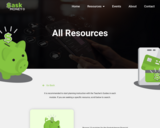
Folders upon folders of excellent financial literacy teaching materials!
"It is recommended to start planning instruction with the Teacher’s Guides in each module. If you are seeking a specific resource, scroll below to search."

Students will learn the consequences of not paying one’s debts and the choices of last resort for out-of-control debt. Students will explain how using [types of predatory loans] can cause a vicious cycle of debt. Bankruptcy is also introduced, and the various costs associated with bankruptcy are outlined. The students will discover what steps a person can take to avoid filing for bankruptcy, including seeing a credit counselor.

Comic Book titled “The Game Plan” by The Healthy Aboriginal Network https://istorystudio.com/wp-content/uploads/2014/04/Game-Plan.pdf The Healthy Aboriginal Network’s Game Plan is a comic book for Aboriginal youth featuring a teenager named Jake who struggled with financial wellbeing until he was taught a lesson or two in financial literacy. Making the right financial decisions helped Jake achieve his goals and feel financially empowered.

Apply decision-making strategies to various financial scenarios.
Teacher Guide Provided
3-5 hours

This activity allows the students to discuss the burden of student loans and financing post-secondary education. An additional aspect to this activity is the mental health aspect regarding heavy debt loads for post-secondary. The discussion could include a debate on student loans, who is responsible and can a student "walk away" from this debt? Should the government pay for post-secondary education for everyone? If yes, would you be willing to pay more taxes for free post-secondary education?Students often finance their post-secondary education, which can be very expensive over many years. How does a student pay this debt back if they are unable to finish their program, especially in expensive programs such as medicine or law?